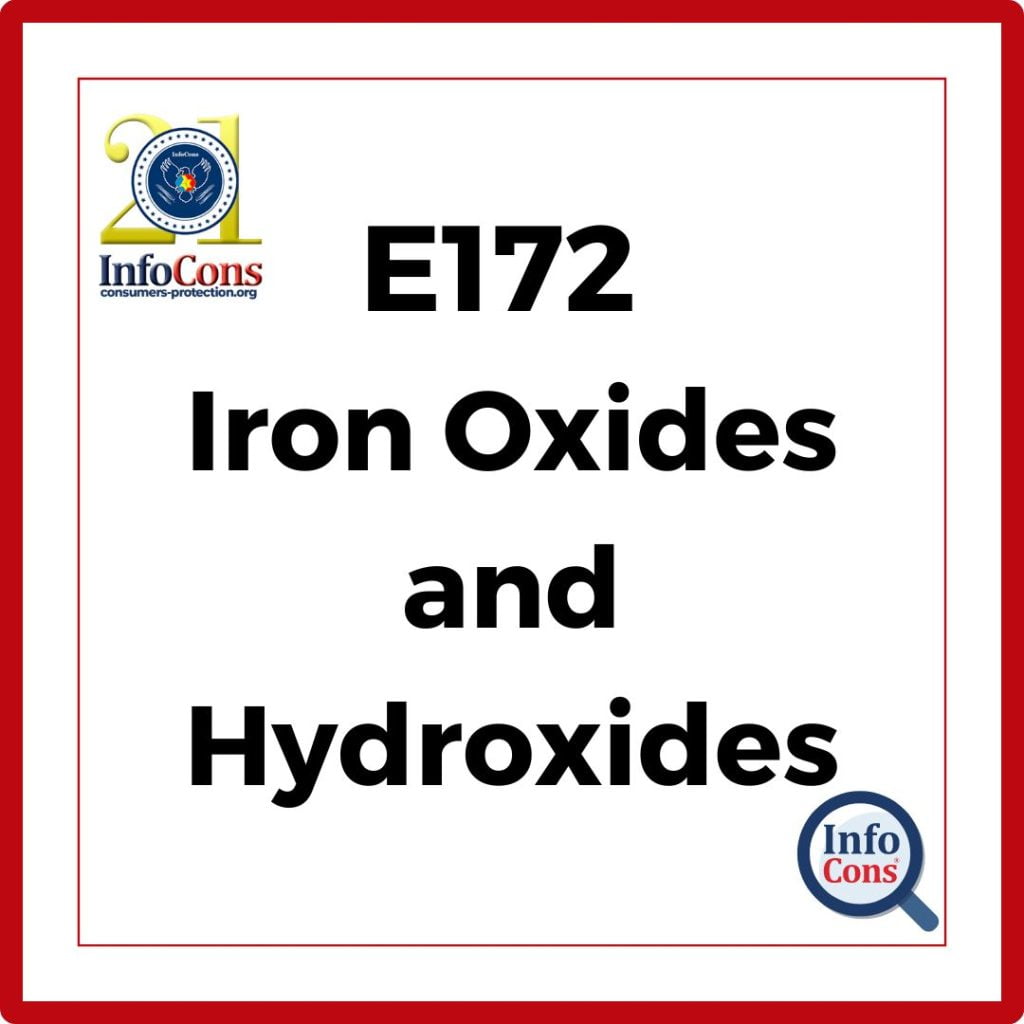 What is the food additive E172 ?
What is the food additive E172 ?
E172, commonly known as iron oxide, is an additive and pigment widely found in various industries and applications. This compound is known for its vibrant shades, ranging from red, yellow, and brown to black, and is extensively used in food products, cosmetics, pharmaceuticals, and even in artistic and industrial applications.
E172, iron oxides, and hydroxides, can be found in the forms of E172(i) – Black iron oxide, E172(ii) – Red iron oxide, and E172(iii) – Yellow iron oxide. They are obtained from iron powder and are often synthesized from natural minerals or through chemical reactions, ensuring purity and consistency for various uses.
Do you know in what products you can find E162 – Beetroot Red , Betanin ? InfoCons Consumer Protection informs you !
What is the recommended daily dose ?
The safety of iron oxide in foods is well-regulated, and its use is generally considered safe within prescribed limits. The safety of E172 has been widely studied, especially in its applications as a food additive and cosmetic ingredient. The European Food Safety Authority (EFSA) has established guidelines for the safe use of this additive in the European region.
When used within the recommended limits, namely, 0.5 mg/kg body weight per day, iron oxides and hydroxides are considered safe and non-toxic.
In which products can the food additive E172 be found? InfoCons Consumer Protection informs you:
- Food Industry E172 is approved for use as a food additive in many countries, where it serves as a coloring agent. Its vibrant shades enhance the appearance of confectionery, bakery products, and coatings, making them more appealing to consumers.
- Cosmetics and Personal Care Products In the cosmetics industry, E172 is valued for its non-toxic, stable, and vivid coloring properties. It is a key ingredient in products such as eyeshadows, blushes, lipsticks, and sunscreens, offering a wide range of colors, from natural-looking shades to bold tones.
- Pharmaceuticals Iron oxide is frequently used in pharmaceutical products as a coloring agent for tablets and capsules. It helps in identifying and differentiating medications and plays a role in making medicines visually appealing and acceptable to patients.
- Industrial and Artistic Applications Beyond consumables and cosmetics, E172 finds applications in industrial sectors and art. In construction, it is used to color concrete and bricks, providing them with a durable and aesthetic finish. In the art world, iron oxide pigments are used in paints and coatings, valued for their rich colors and stability over time.
Read More – Pay attention to Alerts for food products with the European InfoCons App !
Contraindications and Risks
Toxicological assessments have shown that E172 does not pose significant health risks when ingested or applied topically. Iron, an essential nutrient for human health, plays a crucial role in the formation of hemoglobin and oxygen transport in the body.
However, excessive intake can lead to conditions like hemochromatosis.
In conclusion, E172, or iron oxide, is a versatile compound with a wide range of applications in various industries. Its ability to provide vibrant and stable colors makes it invaluable in foods, cosmetics, pharmaceuticals, and more. Although it is generally considered safe when used within regulated limits, it is essential to continue monitoring and managing its applications to ensure safety and sustainability.
Look for products that have a cleaner label or use natural additives. By installing Consumer Protection InfoCons App and scanning the barcodes of food products, you can find out the number and type of food additives they contain.
Author – Cosmina Nițu
Master in Nutrition – Infant and new born nutrition
Sources:
https://www.efsa.europa.eu/en/ – European Food Safety Authority (EFSA)
InfoCons – European Organization for Consumers Protection and Promotion of Programs and Strategies , a full member of the World Organization Consumers International, founding member of the Federation of Consumer Associations, and member of ANEC.